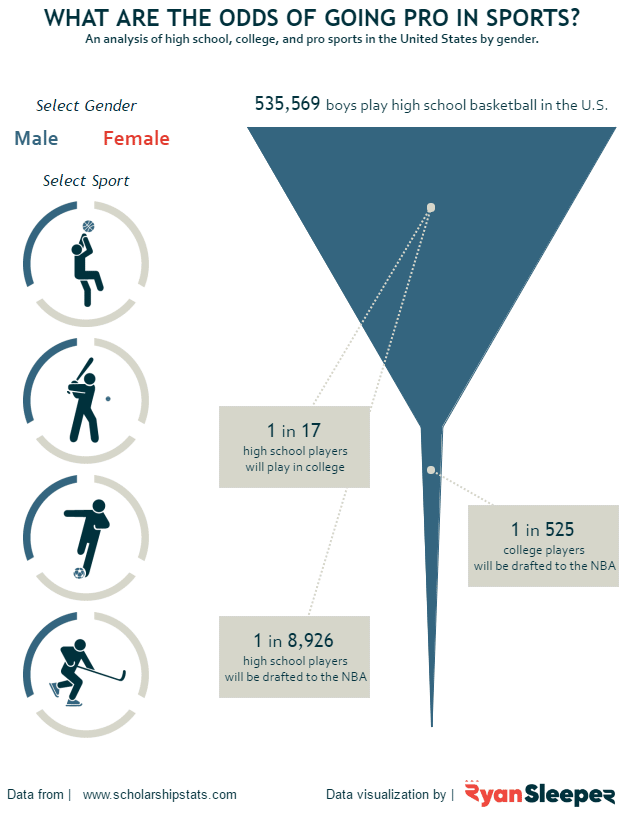Practical Tableau: How to Make Funnel Charts
The Odds of Going Pro in Sports viz has generated more questions around how it was created than any other viz I have put together during my career with Tableau. With its one dominant funnel chart and icon-based navigation, the viz tells the story about the share of high school athletes progressing to the college and pro levels across several sports for each gender.
The most common question I receive: That was made in Tableau? I would be lying if I said that question doesn’t make me want to stand up a little taller, but the secret is, the viz was one of the easiest dashboards I have ever put together. In fact, I put it together in a couple of hours on a Sunday afternoon. Funnel charts are one of the simplest chart types you can create, but they have proved to be incredibly effective in a corporate setting – think conversion rates and customer flows. Funnel charts are not one of the out-of-the-box “Show Me” options in Tableau, so this post will walk you through multiple approaches to creating funnel charts.
First, let’s take a look at the full version of What are the odds of going pro in sports?
How to make funnel charts in Tableau
Option 1: The Step Dimension
Going into this project, I knew that I wanted the main view to be a funnel chart. For this reason, I was able to plan ahead and put the data in an optimal format for Tableau. Here is a sample of the underlying data:
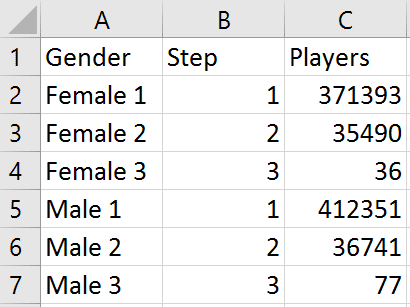
Note that there is a dimension of “Step”, which is just an arbitrary, intuitive name for each of the three levels of high school, college, and pro. The measure is then the corresponding number of players that reached each step. This is the easiest way to build a funnel chart; here are the steps:
Create a free account, or login.
Unlock this tutorial and hundreds of other free visual analytics resources from our expert team.
Already have an account? Sign In
1. Create a horizontal bar chart by dragging your step dimension onto the rows shelf and your players measure to the rows shelf.
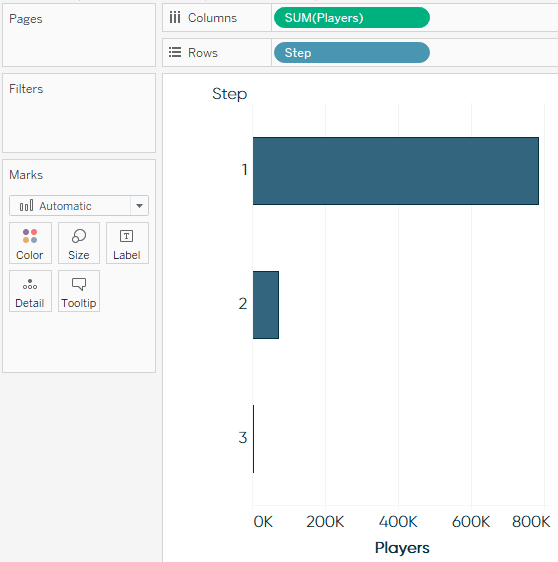
2. The next step is where the magic happens. Simply change the mark type from ‘Automatic’ (which is currently ‘Bar’) to ‘Area’. You are left with the right side of the funnel.
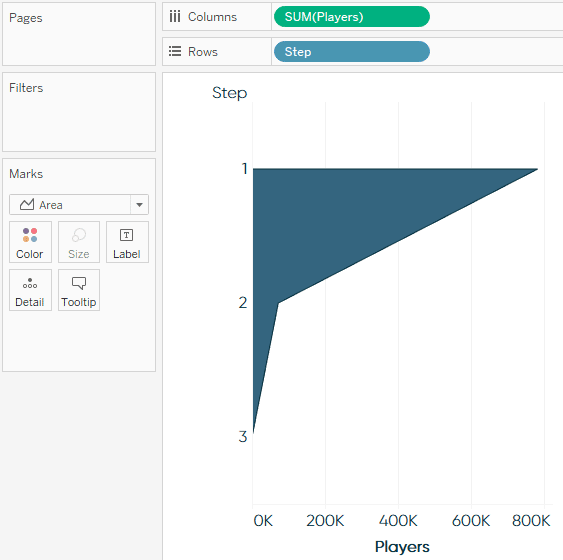
3. If your data is in a format outlined in the table above, there is a simple solution to mirroring the right side of the funnel onto the left side. To do this, you will create a calculated field by right-clicking on the ‘Players’ measure and selecting ‘Create Calculated Field’. Name your calculated field ‘Negative Players’ and add a ‘-‘ in front of ‘[Players]’. Your entire formula will look like this:

4. The final step in creating a symmetrical funnel chart is to drag and drop your new ‘Negative Players’ measure in front of the ‘Players’ measure on the columns shelf.
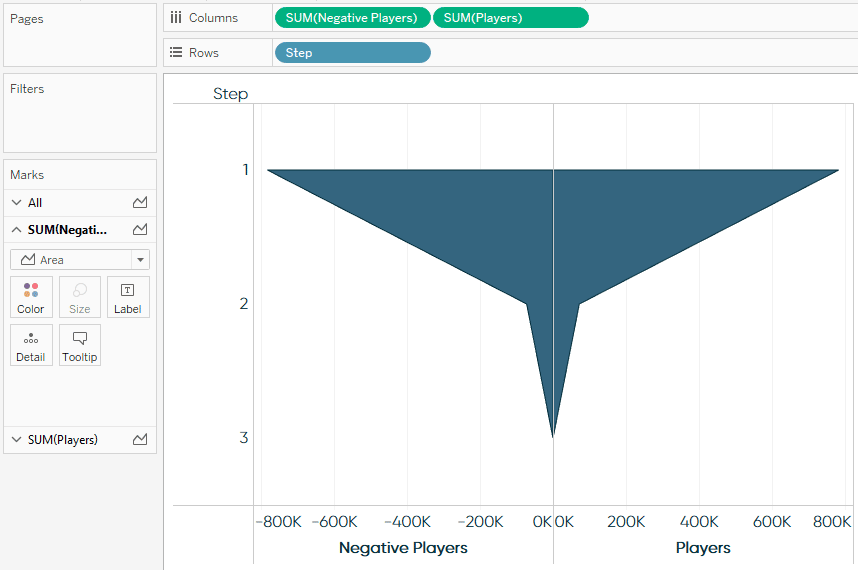
From here, your funnel chart can be used like any other chart in Tableau. Encode it by color (in my case, its colored by gender), add quick filters, and add tooltips / labels / annotations to make the data in the chart clear to the end user.
Using separate measures to create Tableau funnel charts
It is likely that your corporate data is not in the layout of the table above by default, and you may not be in a position to easily change this on your own. This solution is not as flexible or optimal for Tableau, but it is functional. Let’s assume that instead of the layout in the table above, your data looks more like this, with each ‘Players’ measure broken out by level, causing your layout to be more horizontal instead of vertical:

In this case, because you no longer have a dimension of step, the approach is slightly different:
1. To create the right side of the funnel, you will need to add the measures to the view individually. The easiest way to do this is to double click each of your three measures (Step 1 Players, Step 2 Players, and Step 3 Players) to add them to the view. Double-clicking each measure will create a small multiples chart, so you will have to use the ‘Show Me’ button to change the chart type to a bar chart. While the set-up is different, you should now see the beginnings of the right side of your funnel, just like in step one from the first approach above:
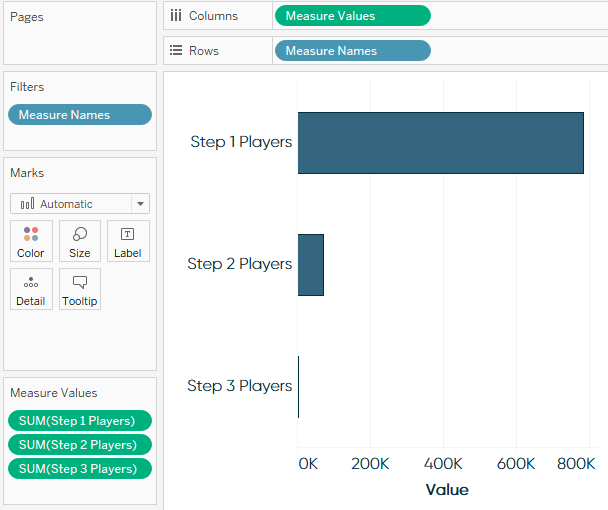
2. Follow Step 2 from the first approach, changing your mark type from ‘Automatic’ to ‘Area’.
3. Step 3 on the second approach is where things get tricky. The first thing you need to do is create a negative version of each of your three measures, much like creating a negative version of the ‘Players’ measure in step three from the first approach. Once you have three new calculated fields, one negative version for each of your three measures (i.e. Negative Step 1 Players, Negative Step 2 Players, and Negative Step 3 Players), open a new worksheet and follow steps one and two from above – this time using your newly created negative versions of each measure. You should end up with the left side of your funnel:
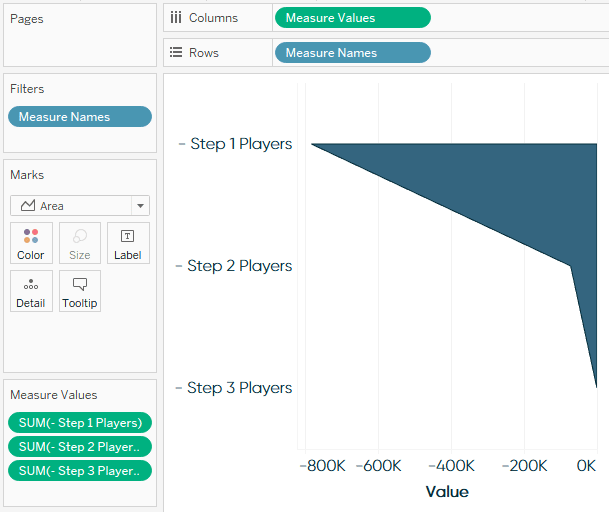
4. The final step to this approach is joining the left and right side of your funnel. This can be accomplished by floating each sheet on a dashboard and lining them up:
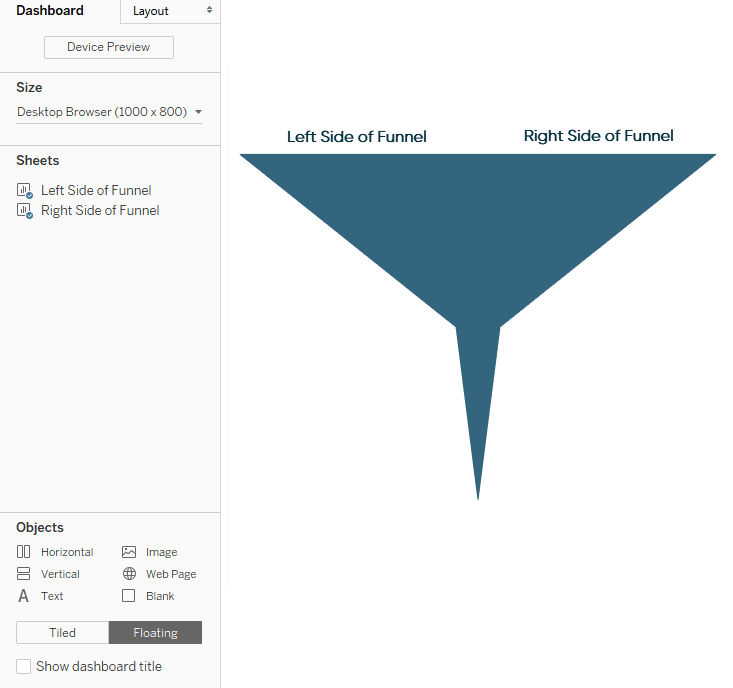
Admittedly, this second approach requires some hackish creativity, but it works with most data out of box without any reformatting.
So there you have it! Funnel charts in four simple steps, regardless of the layout of your funnel data.
Thanks for reading,
– Ryan
This content is excerpted from my book Practical Tableau: 100 Tips, Tutorials, and Strategies from a Tableau Zen Master published by O’Reilly Media Inc., 2018, ISBN: 978-1491977316. Get the book at Amazon.
Related Content
Practical Tableau: How to Create Icon-Based Navigation or Filters
In the second of two chapters related to the Odds of Going Pro visualization, I will show you how to…
Ryan Sleeper
Provide Context so Your Users Can Find Insights and Take Action Ryan shares his very first Tableau Public visualization and…
Ryan Sleeper
When we know the outcome vs. making our user part of the story Did you know there are two types…
